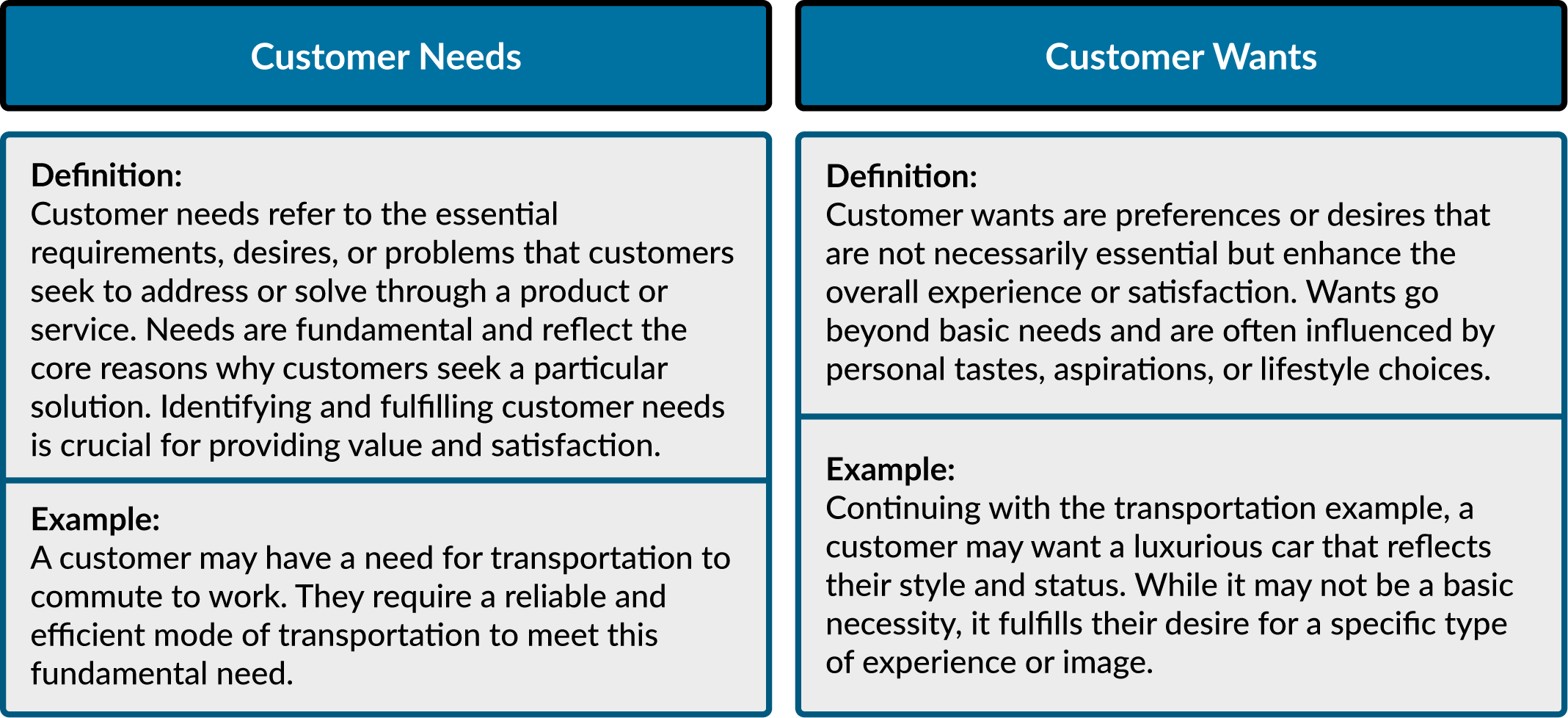Customer Needs, Wants and Demand
Customer needs and values are crucial factors in the realm of marketing and customer relationship management. Understanding and addressing customer needs and values are integral to building strong customer relationships and achieving business success.
Here’s an explanation of the difference:

Customer demand refers to the quantity of a particular product or service that customers are willing and able to purchase at a given price and within a specific timeframe. It represents the level of desire or need for a product or service in the market.
Customer demand is influenced by various factors, including customer preferences, economic conditions, pricing, competition, marketing efforts, and external influences. Understanding customer demand is crucial for businesses to effectively manage their inventory, production, pricing, and marketing strategies.
Here are a few key points about customer demand:
- Quantity of Goods or Services: Customer demand indicates the quantity or volume of goods or services that customers are interested in purchasing. It helps businesses estimate the level of sales they can expect and plan their production or service capacity accordingly.
- Price Sensitivity: Customer demand is often influenced by the price of the product or service. Higher prices may lead to lower demand, while lower prices may increase demand. Understanding the price elasticity of demand helps businesses determine the optimal pricing strategy to maximize sales and profitability.
- Market Trends and Preferences: Customer demand is shaped by market trends and customer preferences. These factors can change over time due to shifts in consumer behaviour, evolving preferences, emerging technologies, or new market entrants. Monitoring market trends and staying attuned to customer preferences helps businesses anticipate and respond to changes in demand.
- Seasonality and Trends: Demand for certain products or services may be subject to seasonal variations or trends. For example, demand for winter clothing increases during the colder months, while demand for beachwear rises during the summer. Recognizing and planning for these seasonal fluctuations helps businesses optimize their operations and inventory management.
- Demand Forecasting: Businesses employ demand forecasting techniques to estimate future customer demand based on historical data, market analysis, and other relevant factors. Accurate demand forecasting enables businesses to make informed decisions regarding production, inventory management, pricing, and marketing strategies.
- Meeting and Influencing Demand: Businesses strive to meet customer demand by ensuring the availability of products or services in the desired quantity and quality. Additionally, businesses may use marketing and promotional strategies to influence and stimulate demand through targeted advertising, sales promotions, product positioning, and other marketing tactics.

By understanding customer demand, businesses can make informed decisions regarding production, pricing, marketing, and inventory management. This understanding helps them optimize their operations, meet customer expectations, and maximize their overall success in the market.
In customer relations, understanding needs, wants, and demands is essential. By addressing customer needs, businesses ensure their products or services fulfill the fundamental requirements and solve problems effectively. Meeting customer wants allows businesses to go beyond basic satisfaction and create personalized experiences that delight customers and differentiate themselves from competitors. And understanding customer demands means a business can make informed decisions reflecting both needs and wants. Customer relations involves a balance between all three.